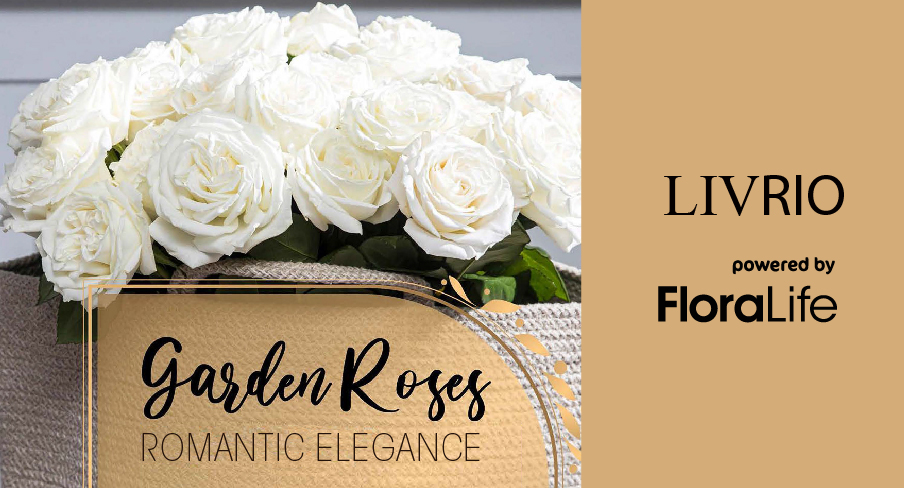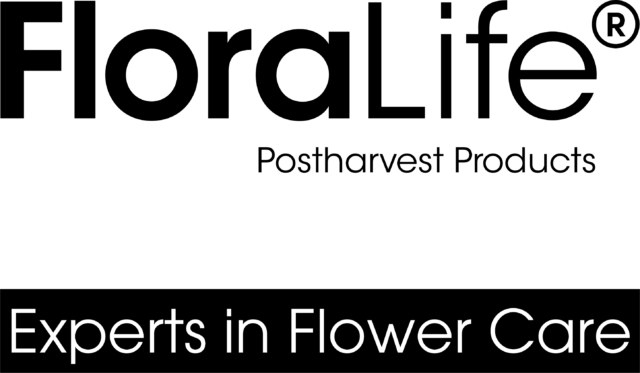Garden Roses: Romantic Elegance
LivRio Magazine May 2023, powered by FloraLife

Garden roses have increased in popularity over recent years, especially for events such as weddings, but what exactly is a garden rose? Well, they are essentially roses which have a unique aesthetic, typified by a central mass of clustered petals surrounded by a loose halo of outer petals.
Until recently, this type of rose could only be found in gardens, but breeders have succeeded in developing varieties which retain this beautiful floral form with the required characteristics of commercially grown cut flower.
Reminiscent of English gardens, and Jane Austen, these roses will add lashings of romance to any wedding venue. Adding to their appeal, garden roses are often fragrant, which makes them perfect for bridal bouquets and boutonnieres alike because who wouldn’t want their groom to smell like a rose and resemble Mr. Darcy on their wedding day?
But because this type of roses lends itself so well to the naturalistic look, don’t be fooled into thinking that they are a one trick pony. If displayed en masses and as a monoculture, they easily exude glamour and sophistication.
So, develop a romance with garden roses this wedding season, your brides and grooms will love you for it.
Garden Roses Care & Handling Tips
Hydration & Storage at Store Level
- Start processing with a clean bucket, sanitized with FloraLife® D.C.D.® Cleaner.
- If received dry packed, conditioning of stem ends is recommended to prevent blockage and promote uptake. Cut approximately 1” or more off stems. Use clean, sanitized clippers or knife, and treat with FloraLife® Quick Dip.
- Place flowers in a holding treatment such as FloraLife® Express 200. Do not put flowers directly in metal/galvanized buckets. Use clean, high-quality water that has not been treated with a water softener as the salt levels can be damaging to flowers.
- Store in a cooler at 34 – 38° F (1-3° C) with a relative humidity of 75-85%
- Allow minimum 2 hours to hydrate placing buckets in an area with good airflow.
- Always remember FIFO (first in/first out) when rotating flowers.
Vase Care
- Remove any leaves that might be below the vase solution.
- Cut approximately 1” or more off stems. Use clean, sanitized clippers or knife. If received dry, treat with FloraLife® Quick Dip.
- Immediately place flowers in vase solutions containing FloraLife Crystal Clear® 300 or FloraLife® Express 300.
Special Considerations
- Wedding flowers are often subject to conditions not favorable for vase life. Use a hydration spray, such as FloraLife® Finishing Touch or FloraLife® Crowning Glory® to lock in moisture for handheld bouquets, corsages, and boutonnieres. Arrangements in water or foam will also benefit from a hydration spray treatment, especially if the event will be outdoors.
- Roses are best hydrated with their protective packaging intact. If received dry packed, leave stems in their packaging for at least 2 hours or until hydrated. If product is received wet packed from your supplier, there is no need to keep the packaging on when you process your roses. Gently remove it upon arrival.
- Avoid getting water on blooms! Roses are prone to botrytis when blooms are over saturated.
- Roses are ethylene sensitive; insist that your supplier treats with an ethylene inhibitor such as EthylBloc™ to protect against exposure. Do not store or display near ripening produce or products that produce ethylene.
- The outer petals of roses tend to be quite different from the inner petals, these are known as ‘guard petals’ and are a naturally occurring part of the rose. Many florists choose to remove them for aesthetic reasons, but they can also add a naturalistic element if left untouched. To remove them, simply hold each petal firmly and give them a gentle tug to remove.
For more information, click here:
*Product availability depends upon geographical region.
Check https://floralife.com/products/#product_grid for more information.
